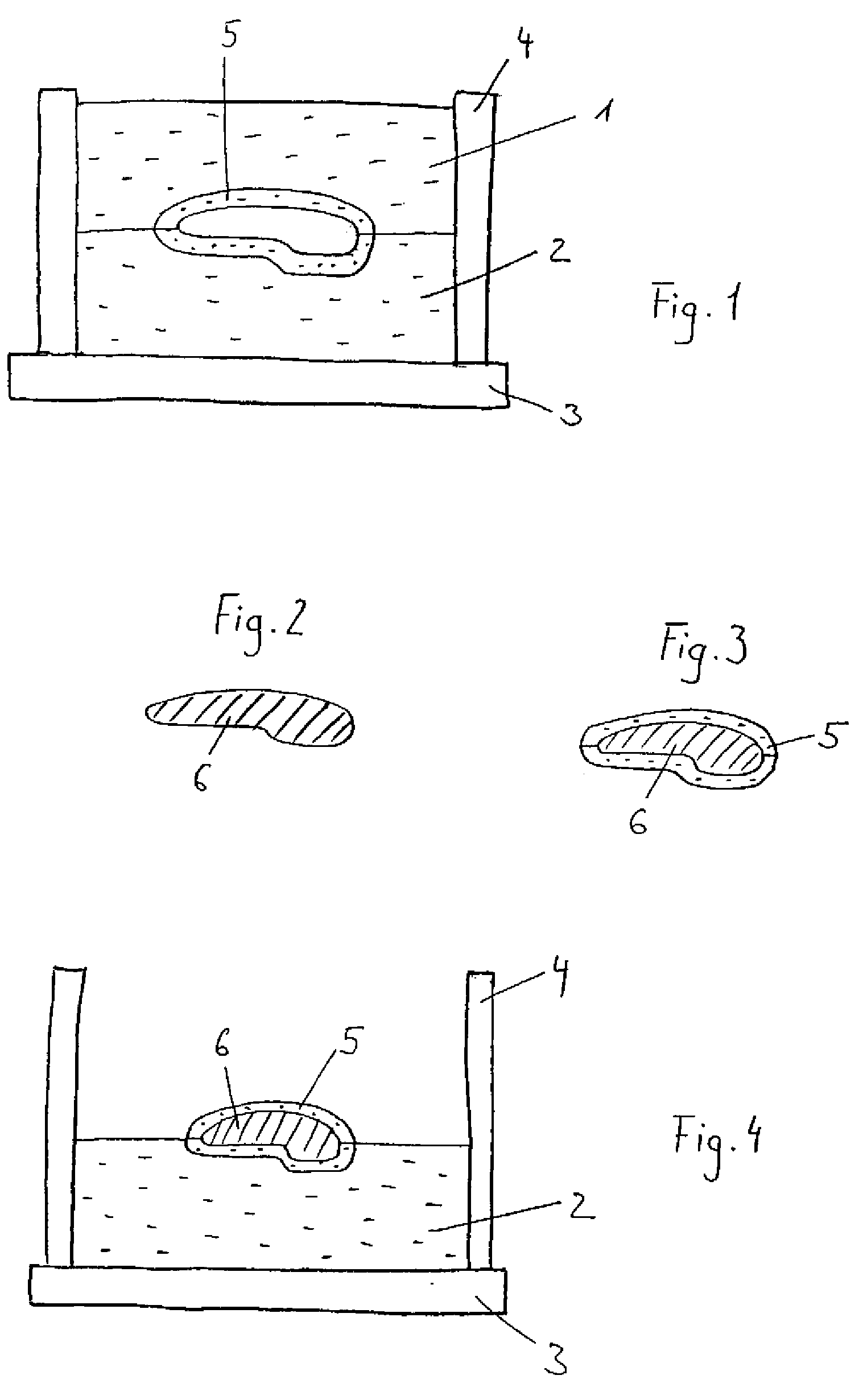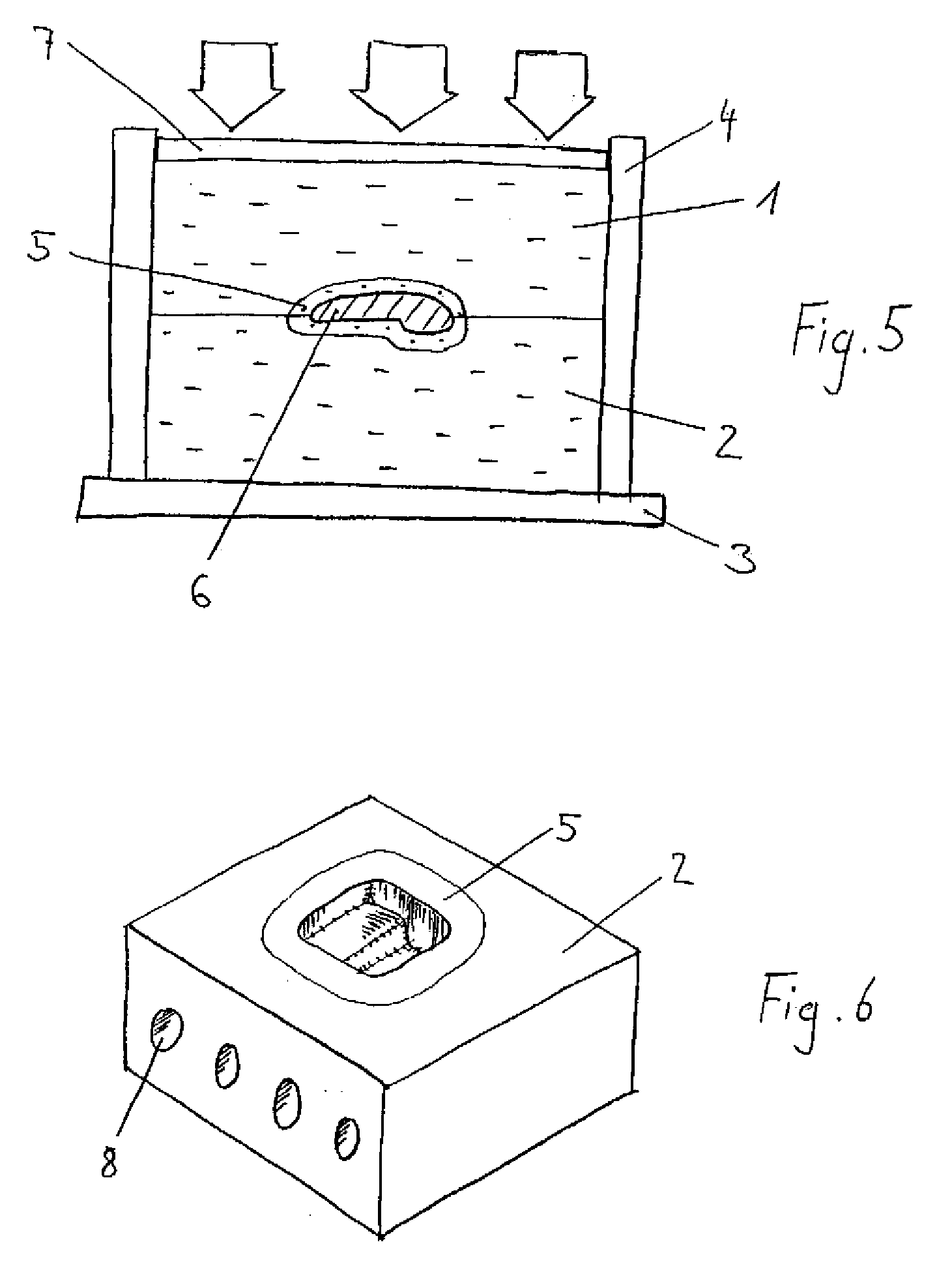Mold for producing an article
a technology for producing articles and molds, applied in the direction of ceramic shaping apparatus, building parts, building parts, etc., can solve the problems of prototypes that do not have exact properties, casts that cannot be easily changed in their design, and molds that do not allow high pressure molding, etc., to achieve accurate and precise molds, adjust or enhance the properties of mold matrix materials, and accurate and precise effects
- Summary
- Abstract
- Description
- Claims
- Application Information
AI Technical Summary
Benefits of technology
Problems solved by technology
Method used
Image
Examples
Embodiment Construction
[0048] Throughout all the Figures, same or corresponding elements are generally indicated by same reference numerals. These depicted embodiments are to be understood as illustrative of the invention and not as limiting in any way. It should also be understood that the figures are not necessarily to scale and that the embodiments are sometimes illustrated by graphic symbols, phantom lines, diagrammatic representations and fragmentary views. In certain instances, details which are not necessary for an understanding of the present invention or which render other details difficult to perceive may have been omitted.
[0049] Turning now to the drawing, and in particular to FIG. 1, there is shown a schematic cross-sectional view of an assembled mold according to the present invention, including a top box 1 and a bottom box 2. Top box 1 and bottom box 2 are made up from a mold matrix material containing at least one type of carbon fibers and a phenolic resin. Close to the surface on which a ...
PUM
| Property | Measurement | Unit |
|---|---|---|
| flexural modulus | aaaaa | aaaaa |
| flexural modulus | aaaaa | aaaaa |
| compressive modulus | aaaaa | aaaaa |
Abstract
Description
Claims
Application Information
 Login to View More
Login to View More - R&D
- Intellectual Property
- Life Sciences
- Materials
- Tech Scout
- Unparalleled Data Quality
- Higher Quality Content
- 60% Fewer Hallucinations
Browse by: Latest US Patents, China's latest patents, Technical Efficacy Thesaurus, Application Domain, Technology Topic, Popular Technical Reports.
© 2025 PatSnap. All rights reserved.Legal|Privacy policy|Modern Slavery Act Transparency Statement|Sitemap|About US| Contact US: help@patsnap.com



